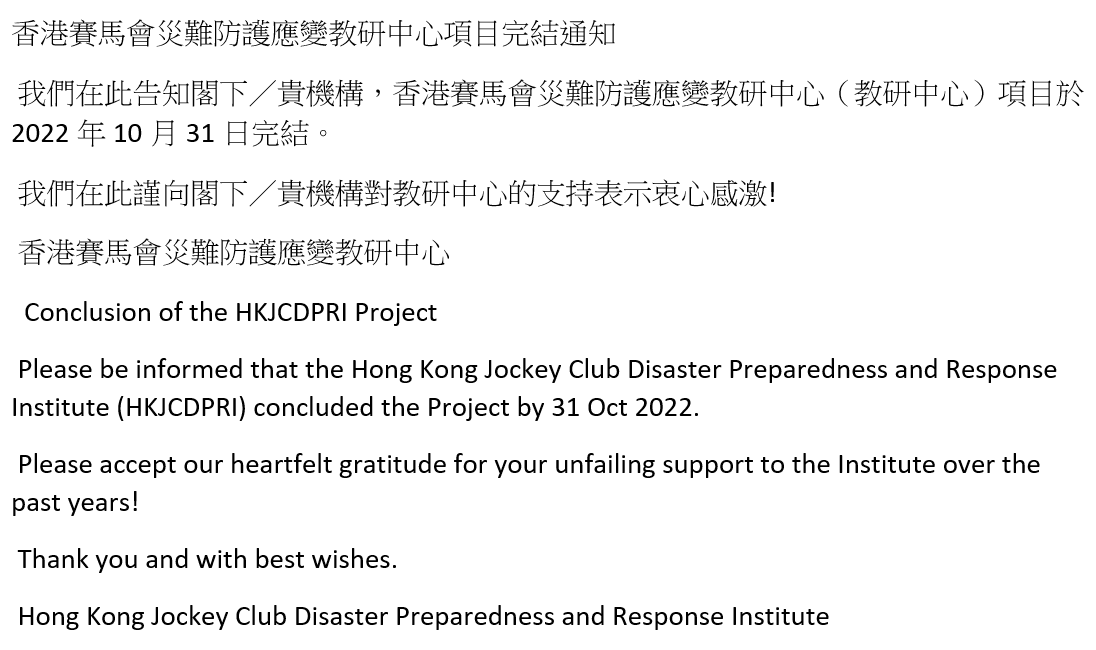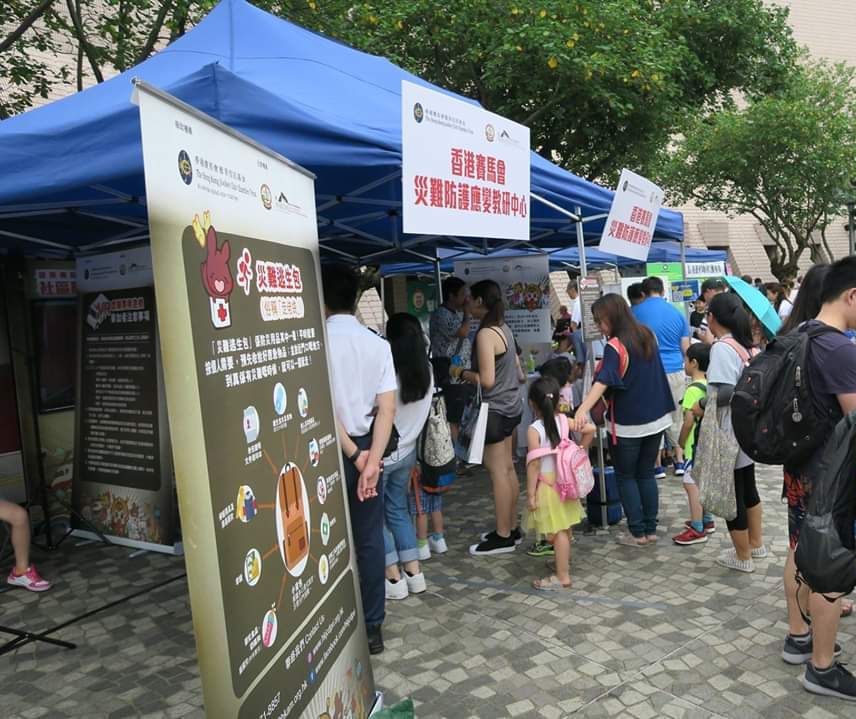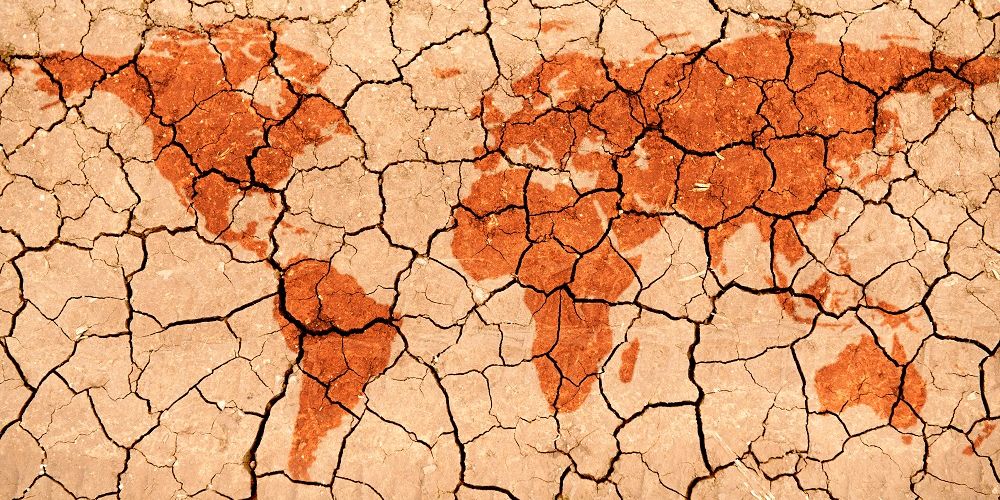You are here
出版物 & 研究
出版物 & 研究

出版物 & 研究
香港賽馬會災難防護應變教研中心的出版物涵蓋了教研中心跟合作夥伴、顯赫學術機構的研究項目,以及有關災難防護和應變的其他研究與開發。
指引列出了教研中心特別揀選的災難管理技術資訊、操作指引和有用工具。
博客提供了一個平台,讓持份者能分享與災難有關的最新動態、意見及經驗分享。
博客文章由作者以個人身份或代表所屬單位撰寫。內容表達的觀點、思維及意見純屬作者個人想法,並不代表香港賽馬會災難防護應變教研中心的立場。
公眾可在尊重知識產權情況下,使用所有資料,並必須適當引述出處。
2020
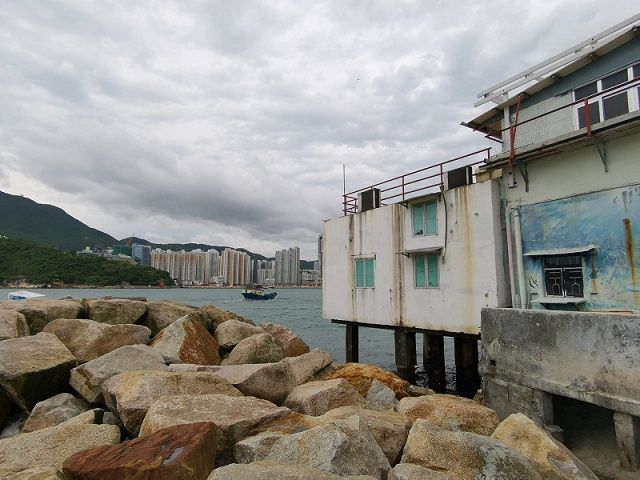
香港賽馬會災難防護應變教研中心
綠色和平根據天文台的數據,為香港不同地區進行估算,找出香港那些地區會最受風暴潮影響,並且製作成地圖供市民參考。到底甚麼是風暴潮呢?
根據天文台的資料[1],風暴潮是與熱帶氣旋(即大家一般理解的颱風)相關的低氣壓及大風的共同影響而導致海平面上升的現象。
熱帶氣旋的強風將海水推向岸邊, 並於沿岸地區堆高是海平面上升的主要成因(圖一)。
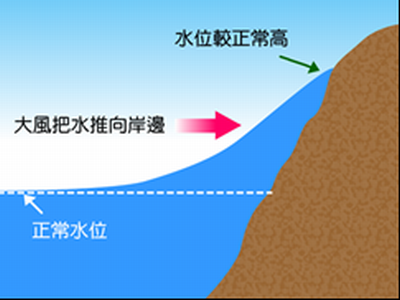
圖 一 強風的影響 (來源:香港天文台)
而熱帶氣旋中心的低氣壓也會增加風暴潮的高度。由於在熱帶氣旋邊緣的氣壓較高,外圍的海水會被壓低,而熱帶氣旋中心附近的海水則會被吸起(圖二)。
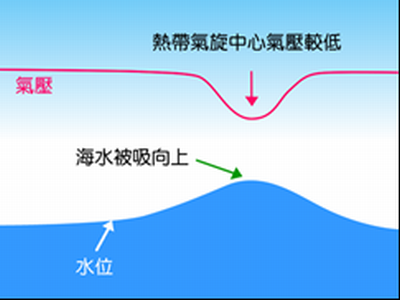
圖 二 氣壓的影響(來源:香港天文台)
由於風暴潮是由熱帶氣旋所引致在天文潮位以上的水位升幅, 故此沒有一個特定的參考水平。亦即是風暴潮可能做成的水位升覆會因為發生的時間以及熱帶氣旋的威力而不同,而這個正正就是社區難以預計風暴潮可以帶來的影響有多大的原因。
但是可以肯家的是,如果氣候變化所帶來海平面不斷上升的話,風暴潮所帶來的影響肯定是會加大的。
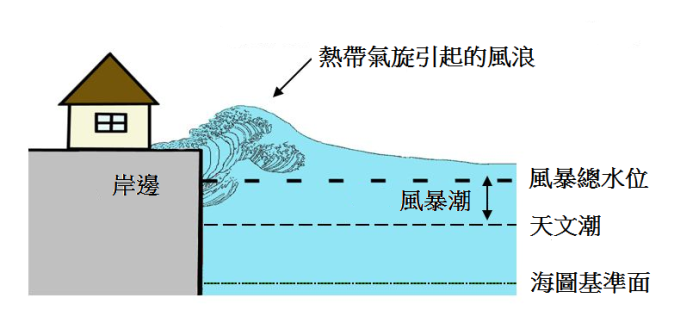
圖 三 風暴總水位和風暴潮的關係(來源:香港天文台)
假設我們住在如下圖所示的沿岸社區,我們是否可以想像風暴潮為我們所帶來的影響有多大呢?

圖四:西貢對面海(來源:香港賽馬會災難防護應變教研中心)
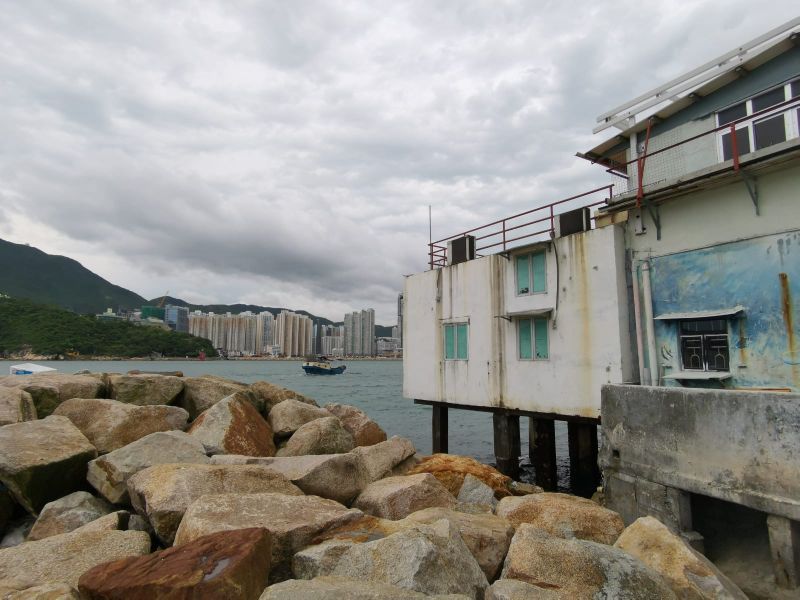
圖五:鯉魚門(來源:香港賽馬會災難防護應變教研中心)
氣候變化為人類所帶來的變化仿似是有點遙遠,科學家經常會在不同的國際會議或媒體上公佈氣溫上升的速度,又或是水平面上升的高度,但對這些仿似微少的變化會為香港和我們所住的社區帶來甚麼直接影響呢?影響會有將大呢?作為小市民的我們又可以怎樣回應這些變化呢?如大家對以上的內容感興趣,可以稍後細讀以下分段推出的博客文章:
- 氣候變化與備災(二) - 氣候危機將令香港沿海地區受到更嚴重的風暴潮威脅
- 氣候變化與備災(三) - 氣候危機殺到!到世紀中你家還安全嗎?
- 氣候變化與備災(四) - 解決氣候危機的方法:綠色和平教大家應對全球暖化自救法
參考資料:
什麼是風暴潮? 香港天文台, 伍滿照, 2014年9月
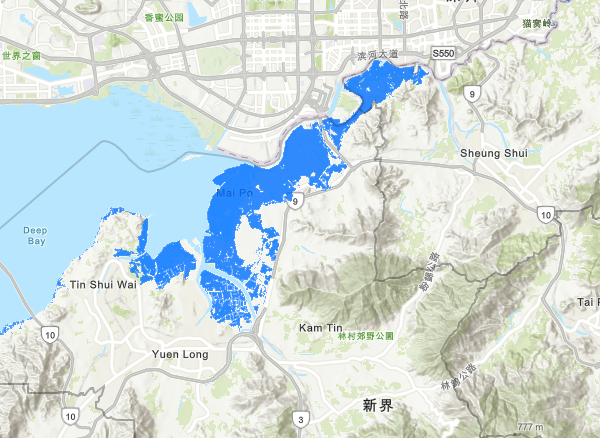
全球暖化是不爭的事實,隨著氣候危機惡化,類似超強颱風「山竹」所帶來的風暴潮可能在本世紀中變成十年一遇。綠色和平參考香港天文台兩項研究,指出若溫室氣體排放趨勢不變,2051至2060年香港的平均海平面高度或較1986至2005年的平均水平上升近0.6米;而在相若的海平面升幅下,颱風在維多利亞港帶來的十年一遇風暴潮最高水位可達3.8米,接近山竹襲港時的紀錄。
山竹襲港時維港最高潮位達3.88米,其餘位處各區的四個潮汐站甚至錄得更高潮位。綠色和平據此推斷,香港沿海地勢在4米或以下的地方,到本世紀中將較容易受十年一遇、如山竹襲港時的風暴潮影響而出現嚴重水浸的情況。

截至2020年6月中,全球2019冠狀病毒疾病(COVID-19)染病人數已突破8百萬人,而死亡人數則超過45萬,雖然全球多個地方的新增個案已受到控制,而在本港更多時沒有新增本地個案,但外出時需要戴口罩的措施似乎仍需維持一段日子。今年,相信世界各地都需要過一個戴口罩的夏季!
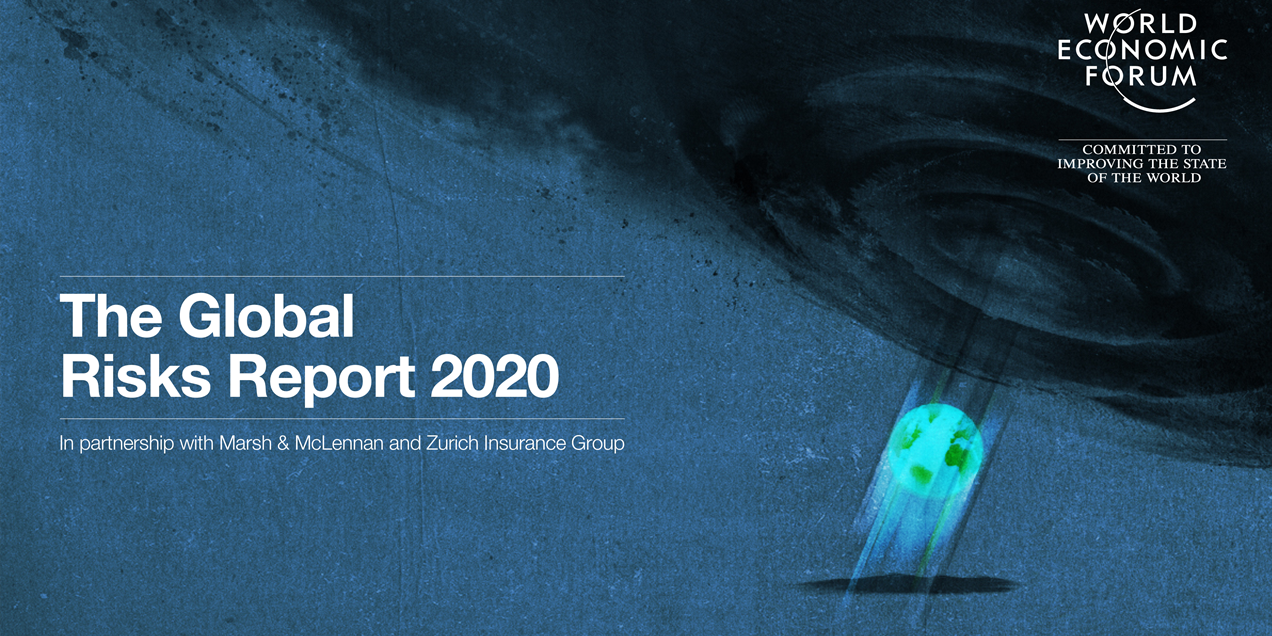
[本文只供英語版本]
[本文只供英語版本]
At a critical time when collective action is essential to correct the failures of climate change, biodiversity loss and infectious disease, nations are more fragmented than ever. The 15th edition of the World Economic Forum’s Global Risks Report has been published as the world stands at the brink of unprecedented climate-related emergencies. The report calls for a multi-stakeholder approach, cautioning that opting to ride out the current period in the hope that the global system will “snap back” runs the risk of missing crucial windows to address pressing challenges.
The report connects ten of the most crucial risks over the coming decade to climate change. These include extreme weather, climate action failure, natural disasters, biodiversity loss, human-made environmental disasters, data fraud or theft, cyberattacks, water crises, global governance failures and asset bubbles.
Climate change is striking harder and more rapidly than expected. Record-breaking temperatures, increasingly frequent natural disasters, and as-yet unknown risks (likely including extreme loss of life, stress on ecosystems, increased migration, exacerbation of geopolitical tensions, trade, labour and supply chain disruption) threaten irreversible harm. Scientists, politicians, and grassroots groups are calling for swift and effective action in the form of a Green New Deal, agreeing that we must limit global temperature rise to 1.5 degrees by the end of the century.
Beyond the direct impact of climate change, the report points out that destabilising tipping points in nature could exacerbate the social and economic consequences of climate risk. Human-imposed extinction rates are off the charts; and the stress our actions have put on our ecosystem alters Earth’s land surface and impacts ocean area, pollutes habitats and our food chain, introduces non-indigenous species that edge out native ones and obliterates masses of insect populations, coral reefs and phytoplankton. Scientists are calling for a return to nature to explore new therapeutic opportunities -- efforts that are threatened by biodiversity loss.
In Hong Kong, climate change has manifested itself in the form of increasing numbers of severe weather events in recent years. Super Typhoon Hato battered Hong Kong in August 2017 with wind gusts of up to 193 km/h, and went on to cause direct economic loss in excess of HKD38 billion in Macao, as well as in Guangdong, Guangxi, Fujian, Guizhou and Yannan.[1] It was followed by Super Typhoon Mangkhut, which impacted Guam, the Philippines, Hong Kong and Southern China in September 2018. The fifth tropical cyclone to affect Hong Kong that year, Mangkhut injured at least 458 people in the SAR, and paralyzed sea, land and air transportation services with destruction caused by heavy rain, storm surges and high waves.[2]
It is anticipated that climate change will continue to accelerate the frequency of severe weather events on a global scale. In the context of Hong Kong, this highlights the need to examine not only the direct impact of typhoons and other events, but also their indirect impact on critical infrastructure such as transportation networks and nuclear power plants. However, the current global COVID-19 pandemic has also highlighted the need to prepare for emergency situations beyond extreme weather events – raising awareness for another set of potential risks and mitigating preparations.
Aiming to build Hong Kong’s disaster resilience, the Hong Kong Jockey Club Disaster Preparedness and Response Institute (HKJCDPRI) was established in 2014 to provide a platform for comprehensive training, capacity building, research, policy discussion and knowledge exchange. Working to prepare the community for both short-term and long-term impacts of climate change, HKJCDPRI creates learning opportunities for disaster practitioners and the general public – sharing knowledge regarding a range of topics, from disaster preparedness to disease prevention.
For more details, please view the full report on The World Economic Forum’s Global Risks Report 2020.
[1] http://www.hko.gov.hk/en/informtc/hato17/report.htm
[2] http://www.hko.gov.hk/en/informtc/mangkhut18/report.htm



